by Lorri | Apr 24, 2013 | UnCorked
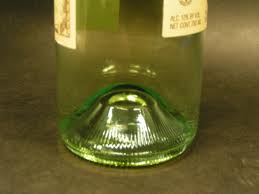 In my previous post I outlined the reasons for different shapes of wine bottles. In this post I’ll explain the reason behind the bottle’s other features.
In my previous post I outlined the reasons for different shapes of wine bottles. In this post I’ll explain the reason behind the bottle’s other features.
The punt of a wine bottle – the deep indention in the bottom of the bottle – is the most questioned of modern bottle shapes. In early bottles, punts added strength to the bottom of the glass and helped stabilize the base, as hand-blown glass can be wrought with imperfections. Punts are common on sparkling wine bottles because it was common practice in Champagne, France, to stack the bottles neck to punt. Punts can also make a wine bottle appear bigger and more impressive. Another function is that it adds an elegant placement for the sommelier’s thumb while pouring in fine dining situations. However, its main purpose today is cosmetic.
The size and shape of sparkling wine bottles has clearly defined roots. In the early days of Champagne-making, it was a common occurrence for bottles to explode from the pressure (roughly 90 pounds per square inch) generated during fermentation. Some workers even wore protective gear for this reason. Champagne bottles are typically made of thick glass with a pronounced punt. It’s not necessary in modern bottling but is an ingrained tradition we will most likely not see changed.
Although all wine is best kept in dark-colored glass, variations in bottle colors can also be explained by region.Generally, whites and roses are in clear glass, while reds are in darker glass. Dark bottles, either because of regional tradition or production, are produced in shades that range from yellow-green and pale blue-green to almost black. In Germany, brown glass was used to differentiate wine from the Rhine region versus the green bottle from Mosel. Blue glass bottles became a popular alternative about 30 years ago.
The variations in size of the early bottles can be attributed to the challenges of early glass-making. In early wine history, most wine was measured out and then put into a bottle, so bottle size didn’t matter much. But for modern bottling we now have precise regulations, with 750 milliliters being a standard size.
- GREEN GLASS 2011 Domaines Schlumberger Pinot Blanc, France (about $20 retail)
- BROWN GLASS 2010 Frank Family Cabernet Sauvignon, California (about $48 retail)
- CLEAR GLASS 2010 Robert Mondavi Fume Blanc, California (about $20 retail)
by Lorri | Apr 17, 2013 | UnCorked
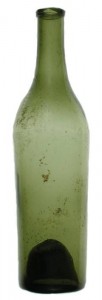 The array of bottle designs has an intriguing history.
The array of bottle designs has an intriguing history.
The modern wine bottle was a journey of man made evolution. The earliest bottles were pretty straightforward: Any vessel that could hold and serve wine, be it pottery, leather or even carved wood, was used. Though glass vessels have been used for wine since at least the Roman times, they didn’t become commonplace until the 17th century.
The shape of early wine bottles resembled an onion – a wide, round body with a short neck. Over time, as glass making techniques advanced and stronger bottles were produced , they became taller and narrower. These elongated bottles allowed vintners to store more of their product. In the 1700s, the practice of binning ( storing a bottle on its side) was created. This storage method was ideal because the cork would stay wet and swollen, ensuring a good seal.
But even with the slow transformation from short and round to tall and narrow, specific bottle shapes traditionally are commonly associated with certain regions or styles, such as the high-shouldered “Bordeaux” bottle, the sloped “Burgundy” bottle and the tall, slender “Hoch” (literally high) bottle for German wines. With the globalization of wine production, bottle shape became away to indicate what type of wine was inside. Generally you find red Bordeaux varietals such as cabernet sauvignon and merlot and whites like sauvignon blanc and semillon in the Bordeaux shape, regardless of where the grapes were grown. The same is generally true for Burgundy’s main varietals of pinot noir and chardonnay as well as the German Hoch bottle for Riesling, Gewurztraminer and Alsace wines.
THE “BORDEAUX” SHAPE
- 2010 Francis Coppola Claret Cabernet Sauvignon, California (about $14 retail)
THE “BURGUNDY” SHAPE
- 2010 Schug Pinot Noir, California (about $19 retail)
THE “HOCH” SHAPE
- 2011 Chateau Ste. Michelle Riesling, Washington (about $12 retail)
by Lorri | Apr 10, 2013 | UnCorked
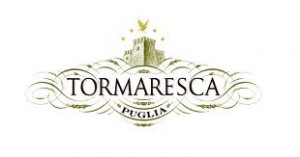 Located in the heel of southern Italy’s boot, Puglia (known as Apulia in English) is undergoing a renaissance in wine production. Unfamiliar to many wine drinkers, the region is proving to be a great source of well-made wines with amazing value. These are a few of my notes after a recent tasting of this gem of Italian wines.
Located in the heel of southern Italy’s boot, Puglia (known as Apulia in English) is undergoing a renaissance in wine production. Unfamiliar to many wine drinkers, the region is proving to be a great source of well-made wines with amazing value. These are a few of my notes after a recent tasting of this gem of Italian wines.
Tormaresca, the estate of the Antinori family in Puglia, means “Tower by the Sea.” The family has two properties in Puglia, one in the south named the Salento region and the other in the north, located in Castel del Monte. The Puglia region has a rich history of culture and gastronomy integrally linked to the sea.
The Antinori family built Tormaresca in 1998, with the goal of creating wines that would be the finest expression of the region’s viticulture. The family, whose winemaking roots date to the 14th century, hopes that by investing in this region and emphasizing the strength of the grapes growing naturally there, that the world will be reacquainted with the quality, integrity and consistency of the areas’ wines. Blending technological innovation with centuries-old vinification techniques, the Antinoris are providing a modern interpretation of vines as old as the land they grow on.
THE VALUE
- 2011 Tormaresca Neprica, Italy (about $12 retail)
At first glance of the label I thought I was going to taste a grape named Neprica I’d never tried. It turns out it isn’t the name of a single grape but an acronym for a blend of grapes. It’s from the first letters of each varietal: NEgroamaro (40 percent), PRImitivo, also known as zinfandel (30 percent), and CAbernet sauvignon (30 percent). Most of the grapes are familiar but Negroamaro is an indigenous grape. This trio makes for a robust red wine that pairs easily with food, like most Italian wines.THE SPLURGE
- Tormaresca Torcicoda IGT, Italy (about $22 retail)
Those who adore California zinfandel will be a huge fan of this wine. It’s 100 percent Primitivo and is layered with all the spices, fruits and full-bodied flavors you would expect. This grape has been growing in southern Italy for centuries.
by Lorri | Apr 3, 2013 | Tips, UnCorked
 I am sure we could search century-old cellar journals and find early versions of the longstanding question of when is the best time to open a bottle of wine. It’s really rather a conundrum because if you pull the cork too early you’re left with a tannic, acidic wine. Open too late and most likely nothing is left except a dried-out fruitless wine. And worse, if you open years past the appropriate life of the wine you’re stuck with a bottle of vinegar.
I am sure we could search century-old cellar journals and find early versions of the longstanding question of when is the best time to open a bottle of wine. It’s really rather a conundrum because if you pull the cork too early you’re left with a tannic, acidic wine. Open too late and most likely nothing is left except a dried-out fruitless wine. And worse, if you open years past the appropriate life of the wine you’re stuck with a bottle of vinegar.
I wish there was a magic calculation to come up with the right date to open our slumbering bottles. But that magic formula doesn’t exist. So, I offer these general guidelines for those who are questioning whether to pop the cork, or not.
Many wines are saved long past their viable life simply because of the owner’s perception of the wine label. I am asked a lot to quickly survey a collection and to offer advice regarding when certain wines are (or will be) ready to drink. A recurring theme is that the attractive French Bordeaux label leads owners – many of whom receive the bottles as gifts – to think they have a wine that should be aged longer than is necessary. A general rule is French labels stating the general and broad category of “Bordeaux AC” are best consumed within one to two years.
Opening any bottle that has been aging is a hit or miss proposition, especially if you only have one bottle. If you are serious about collecting I recommend buying by the case or at least three bottles. This helps you to determine exactly where the wine is in its maturity and offers you the opportunity to taste it in stages. If you have a case, open one bottle soon after you buy it so you have an indication of where the wine is in the aging process. Take notes and re-visit another bottle later to see how the wine is changing.
Red wines generally agewell because of tannins, the chemical substance that creates the pucker power in a young red wine, which has preservation properties. But keep in mind it’s a myth that a harsh tannic, unbalanced red wine only needs to be kept long enough to become a great wine. The same wine five years down the road will likely still be harsh and unbalanced. The same is true of the widespread thinking that young red wines in balance will not improve or change with time.
Color is one of the best gauges for red or white wines. If you are looking at a young red wine (depending on the grape) it will generally have a more purple rim color. As the pigments oxidize they are precipitated along with the tannins becoming more ruby and then gradually a brownish color. Storage conditions, the grape and method of production can also have color impact.
FOR NOW
- 2010 Swinto Old Vine Malbec, Argentina (about $40 retail) to keep for a couple of years.
FOR LATER
- 2007 Bell Vineyards Clone 6, California (about $80 retail) to taste now and until perfection, approximately 8 to 10 years.
by Lorri | Mar 27, 2013 | UnCorked
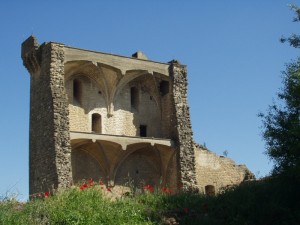 I enjoy wine, but sometimes I am so intrigued by the story behind the bottles that the actual tasting takes second seat. Chateauneufdu-Pape is one of those stories, a worthy centerpiece for France’s southern Rhone, with its distinctly embossed bottle boasting the old papal coat of arms.
I enjoy wine, but sometimes I am so intrigued by the story behind the bottles that the actual tasting takes second seat. Chateauneufdu-Pape is one of those stories, a worthy centerpiece for France’s southern Rhone, with its distinctly embossed bottle boasting the old papal coat of arms.
It’s home to an ancient papal village just north of Avignon possessing a certain and memorable aura.
The first of the Avignon popes, Clement V was installed as pope in 1305. Because of strained relations with the king of France, the Rome papacy and politics in general, the pontiff moved the papal residence to Avignon in 1309, where it remained until 1377.
While Clement gets credit for moving the papacy, it was his successor, Pope John XXII, who was responsible for the progress of the regional vineyards’ prosperity. John was a romantic and longed to retire from the bustle of Avignon to the tranquility of the countryside. A formal retreat was sought and Chateauneuf, complete with a castle that had been ruined, was an ideal choice. Construction of the retreat was started in 1318 and, even with the affluent standards of the time, was a monster endeavor. John was only ableto live in Chateauneuf for a year before his death.
The vineyard prospered for many years but the even tual return of the papacy to Rome and later the devasta tion by phylloxera led to its decline.
In 1923, a monumental shift in the history of wine occurred with increased notoriety of French wines Baron Pierre Le Roy de Boi seaumarie (who deserves credit for changing the wine industry to what we know today) spearheaded a move ment that led to the French system of regulation.
He wanted to safeguard the wines of Chateauneuf du-Pape from the many abuses going on in the busi ness. His six stipulations were monumental for the time: a natural delimitation of the area to be planted only specific grapes to be planted, regulations of prun ing and training, minimum alcohol level of 12.5 percent (this is still the highest min imum level in all of France)specific harvest details, no rose production, and wine failing to pass the tasting panel would not be sold as Chateauneuf-du-Pape. These conditions remain largely unchanged today.
So to answer the question I am asked each year around this time, what wine will I be serving at Easter? Chateauneuf-du-Pape is an easy choice after you know the story.
THE LITTLE SPLURGE
- 2010 Clos de L’Oratoire Des Papes, France (about $53 retail)
THE BIG SPLURGE
- 2010 Domaine du Vieux Telegraphe, France (about $95 retail)
by Lorri | Mar 20, 2013 | Annual Reviews, UnCorked
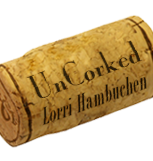 It’s hard to believe I have been writing Uncorked for eight years. I absolutely love sharing ideas each week, but more importantly I enjoy the feedback from you, the reader.
It’s hard to believe I have been writing Uncorked for eight years. I absolutely love sharing ideas each week, but more importantly I enjoy the feedback from you, the reader.
As I celebrate this anniversary, I am reminded my aim for this column has always been to offer honest recommendations of wines we can find in our market. But more than the recommendations, I hope this column makes wine – an often pretentious and confusing subject – fun to learn about and more enjoyable to drink.
This next year as we continue our wine journey together, I want to add a few interactive features to the column. Keep an eye out for a few “homework” lessons involving tasting wines together. You’re the reason I write the column, and your thoughts, questions and suggestions about what you want to know help me immensely. Keep the questions and suggestions coming!
As I do each year, I have put together a complete list of values and splurges featured in this column in the past year. Just send an e-mail or written request to this mailing address and I’ll send you a copy; e-mail uncorked@lorrihambuchen.com or write to Uncorked, c/o the Arkansas Democrat-Gazette, P.O. Box 2221,Little Rock, Ark. 72203.
A few of my favorites from the past year:
THE VALUES
- 2011 Wishing Tree Unoaked Chardonnay, Australia (about $13 retail)
- 2011 Root 1 Chardonnay, Chile (about $12 retail)
- 2010 Cline Cellars Cashmere, California (about $15 retail)
- 2011 Big House Red Boxed Wine, California (about $22 retail)
THE SPLURGES
- 2011 Presqu’ile Pinot Noir, California (about $49 retail)
- 2006 Reynolds Family Winery Persistence, California (about $58 retail)
- 2007 Bell Vineyards Napa Valley Claret, California (about $69 retail)
- 2009 Rombauer Carneros Chardonnay, California (about $49 retail)
 In my previous post I outlined the reasons for different shapes of wine bottles. In this post I’ll explain the reason behind the bottle’s other features.
In my previous post I outlined the reasons for different shapes of wine bottles. In this post I’ll explain the reason behind the bottle’s other features. The array of bottle designs has an intriguing history.
The array of bottle designs has an intriguing history. Located in the heel of southern Italy’s boot, Puglia (known as Apulia in English) is undergoing a renaissance in wine production. Unfamiliar to many wine drinkers, the region is proving to be a great source of well-made wines with amazing value. These are a few of my notes after a recent tasting of this gem of Italian wines.
Located in the heel of southern Italy’s boot, Puglia (known as Apulia in English) is undergoing a renaissance in wine production. Unfamiliar to many wine drinkers, the region is proving to be a great source of well-made wines with amazing value. These are a few of my notes after a recent tasting of this gem of Italian wines. I am sure we could search century-old cellar journals and find early versions of the longstanding question of when is the best time to open a bottle of wine. It’s really rather a conundrum because if you pull the cork too early you’re left with a tannic, acidic wine. Open too late and most likely nothing is left except a dried-out fruitless wine. And worse, if you open years past the appropriate life of the wine you’re stuck with a bottle of vinegar.
I am sure we could search century-old cellar journals and find early versions of the longstanding question of when is the best time to open a bottle of wine. It’s really rather a conundrum because if you pull the cork too early you’re left with a tannic, acidic wine. Open too late and most likely nothing is left except a dried-out fruitless wine. And worse, if you open years past the appropriate life of the wine you’re stuck with a bottle of vinegar. I enjoy wine, but sometimes I am so intrigued by the story behind the bottles that the actual tasting takes second seat. Chateauneufdu-Pape is one of those stories, a worthy centerpiece for France’s southern Rhone, with its distinctly embossed bottle boasting the old papal coat of arms.
I enjoy wine, but sometimes I am so intrigued by the story behind the bottles that the actual tasting takes second seat. Chateauneufdu-Pape is one of those stories, a worthy centerpiece for France’s southern Rhone, with its distinctly embossed bottle boasting the old papal coat of arms. It’s hard to believe I have been writing Uncorked for eight years. I absolutely love sharing ideas each week, but more importantly I enjoy the feedback from you, the reader.
It’s hard to believe I have been writing Uncorked for eight years. I absolutely love sharing ideas each week, but more importantly I enjoy the feedback from you, the reader.